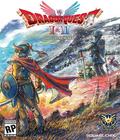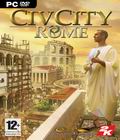Genre: Simulation
Publisher: 2K Games
Developer: Firefly Studios with Firaxis Games
Release Date: July 26, 2006
The chances are that somewhere deep inside of you, past your duodenum, and beyond your latent Freudian urges, lies the restless spirit of an ancient Roman city planner yearning to lay down an aqueduct or two and erect obelisks to the glory of the empire. While these desires may have lain dormant for many years, only to surface during your occasional bacchanalian orgy or toga party attendance, the gaming powers that be want you to know that you have not been forgotten. For this is the unofficial year of the Roman city building game. Firefly Studio’s CivCity: Rome is the second of three Rome-themed games to be released this year falling in between CDV Software’s Glory of the Roman Empire, and Vivendi Universal’s long awaited Caesar IV. So slip back into your leather sandals, flex your city administrator muscles and start making your decrees.
Civ City Rome’s big selling point is that it was inspired by Sid Meier’s seminal Civilization series, but the similarities do not go much further than the name and publisher. There is a stripped-down research system and technology tree, and the ability to construct wonders, but it ultimately bears a much stronger resemblance to titles released by Impressions Games in the late 1990s such as Pharaoh. With its focus on economic and resource management, and fine tuning balances of supply and demand, be sure you don’t buy this game expecting Civilization: The Toga Years.
The game’s main campaign mode leads you by the hand at a nice pace through the fundamentals of city building, ancient Roman style. You’ll start off as an insignificant provincial bureaucrat and work your way up through the ranks, gaining recognition for your talents as an outstanding planner. Each scenario has a set of goals that must be accomplished before you can advance, usually relating to population levels, monetary aims, and civilization ranking which is a composite assessment of the level of culture in your city. At one point in the game, the campaign splits to give you the option of pursuing a more difficult militaristic path where you’ll have the added challenge of dealing with marauding barbarians and Hun as well as keeping your citizens happy.
So you’re thinking, well what’s new? The truth is that there really isn’t too much in the way of innovation here with the designers instead sticking to a well-trodden path. Houses represent your main form of income in the form of taxes and you will want to meet the ever growing demands of your residents for everyday goods and services ranging from the peasants simple need for food and water, to the extravagant demands of the patrician families for gladiatorial entertainment, public spas, access to the senate, and goose for dinner. You’ll get to create and follow the chain of industry all the way from the raw ingredients, to the processing and manufacturing, to the shopkeeper. Bread starts as husks of wheat grown by your farmers. It is ground by donkey-powered mills and then fashioned into loaves by the baker. You’ll have to strategically position housing, shops, granaries and warehouses because each of these has an area of effect and residents and workers will only walk so far to fetch their goods or raw materials.
The game’s challenge increases appropriately as your city grows. Once a house evolves from a large hut to an insulae you’ll need to manually relocate the building because it occupies a different footprint. The insulae can be placed on top of shops leaving an open space for a new peasant’s hovel. The same thing happens when an insulae evolves into a luxury house at which point you’ll probably have to move it out of the crowded city center. This sort of evolution represents a neat progression and while there’s certainly a lot to think about and plan for, it never feels overwhelming staying just within reach of manageability. A range of city reports keeps you informed of who’s doing what where but lacks the sorts of in-depth details that would have made it easier to see what’s going on. For instance, you’ll be told that your granaries are nearly empty, but there’s no way of seeing how much your farms are supplying in relation to how much the population is consuming.
Perhaps I’ve been feeding my inner geek too much recently but I thought a really nice feature of the game is the Civilopedia concept borrowed from Sid Meier. This is presented as a series of simple pastel colored mosaics with interactive hotspots that lead to windows full of factoids you can bore your friends. For instance, did you know that grain was harvested by hand until a reaping machine called a vallus was invented in Gaul around the first century AD? Me neither. Although the presentation is a bit childish, it’s still nice to have the information there, even if it’s just there to be ignored.
The main problem is that the lengthy campaign quickly becomes very repetitive and lacks any challenge once you’ve figured out how the game ticks. Money is only a problem for the first ten minutes or so, then if you played your cards right you’ll be up to your eyeballs in denarii. The frequently recycled mission goals will quickly devolve into a sense of déjà vu and you’ll need a lot of stamina and patience to keep rebuilding your city from scratch with the only reward being a progressive introduction to the new buildings. The largely derivative tech tree confers statistical bonuses on your city such as increased production, or the ability to build certain wonders, but unlike research in Civilization, it does not possess any integral strategic benefit that might turn the tide of the game depending on your choice.
In some ways, the CivCity: Rome, perhaps in an effort to appeal to younger gamers, has made the game considerably less complex than previous city builders by paring down the economic systems and your ability to fine tune what goes where. One example is if you are experiencing underemployment and famine and you wish to place more workers in empty jobs in the farms, there’s no way to do this short of manually reassigning each worker one by one – a task that the older city builders allowed you to do globally. The game also wins a “What Were They Thinking?” award for the design decision to have each trading station only able to trade in one commodity at a time. If a nearby port buys wheat and sells stone, you’ll have to build two ships, and two trading ports because it’s apparently inconceivable that a ship could drop off one cargo and conveniently pick up another while it’s in the same port.
The peacetime campaign missions allow you to construct your city far from the front line of the real empire building action where the most trouble you’ll meet is from pesky mountain lions, the occasional easy-to-beat forest fire, or the infinitely occurring and unappeasable earthquake. The wartime campaigns on the other hand are challenging at best and gouge-your-eyes-out frustrating at all other times. Nearby barbarian settlements will send ever-larger waves of armies to harass your settlement ad nauseam. They are ruthlessly efficient at destroying your buildings, none of which have health meters so you’ll never know how close it is to being forcibly converted into a pile of rubble. Your only recourse is to build up a sizeable army and keep them at bay either on your home map or by sending your army out of the town to engage them. The anemic military gameplay controls and imprecise selection utility make combat about as much fun as force feeding. The experience quickly becomes irritating and repetitive, and a huge detraction from the fun of the game. Thankfully, you can always switch back to the peacetime campaign missions at any time.
The graphics are acceptable but look dated, angular and blocky at times. There are few weather and lighting effects, and minimal ambient details. The game looks best if you focus on the architectural features which appear to have been rendered with quite a degree of fidelity. Unfortunately zoom levels are limited – you cannot zoom in really close, but perhaps critically you cannot zoom all the way out to get a god’s eye view of your entire creation so you can never truly appreciate the scale of your city. A touted feature is the ability to satisfy your voyeuristic compulsions by peering behind the walls and through the roofs of your inhabitants but this is hardly an original concept and the novelty lasts three minutes at best. Like many other games of this ilk, zooming in up close is rewarding in the same way that watching an ant colony at work can be. You can watch the olive oil merchant press raw olives into amphora, or the goatherd skin a carcass, or even a bored peasant doing pull ups on the wooden frame of his insignificant shack.
The game features the usual array of tinny whacking, hacking and slashing sounds indicative of a city hard at work. In addition there are some nice orchestral tunes ranging from subdued string numbers that quietly suggest the grandeur of your epic endeavor to sinister screaming brass banshee pieces. By clicking on a resident they’ll offer you their two cents on the state of the city offering intelligent insights or wry quips that will make you wish the designers implemented the ability to throw individuals to the lions. The voice acting is largely good if not hammy and all curiously delivered in a range of English accents from Cockney for the humble peasant to Queen’s English for the upper class.
Perhaps the best summary is that CivCity: Rome is roughly equal parts frustration and stupidly compelling gameplay. Despite the tired premise and lack of any real innovation, it’s still a winning formula borrowed from earlier games. CivCity: Rome is definitely worth playing all the way through at least once to witness the evolution of buildings, and see the really rewarding structures in action like the chariot races, and the gladiator battles. Avid city-building aficionados will know what I’m talking about, but if you haven’t been tending to the money tree in the back yard, you might just want to wait until Caesar IV is released in September to see how it compares.
Score: 6.9/10
More articles about CivCity: Rome











 CivCity: Rome, an innovative city builder inspired by the world of Sid Meier's Civilization, invites players to shift focus from building a multi-city empire and zoom-in on the great cities of the Roman Empire, culminating in Rome itself!
CivCity: Rome, an innovative city builder inspired by the world of Sid Meier's Civilization, invites players to shift focus from building a multi-city empire and zoom-in on the great cities of the Roman Empire, culminating in Rome itself!











































